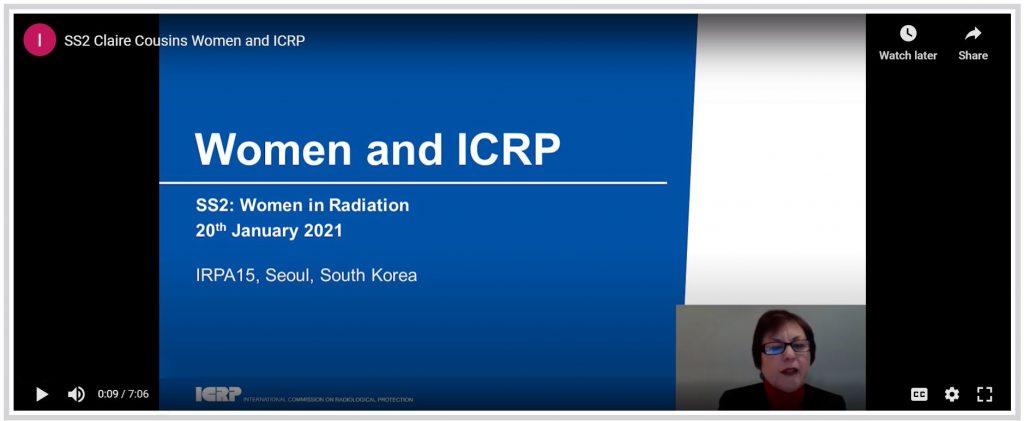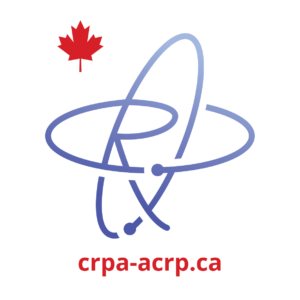A Report from the 15th Congress of the International Radiation Protection Association (IRPA15)

Introduction
The International Radiation Protection Association (IRPA) is the international voice of the radiation protection profession. Worldwide, it promotes enhanced professional competence and radiation protection culture and practice by providing benchmarks for good practice and encouraging the application of the highest standards of professional conduct, skills, and knowledge. The Canadian Radiation Protection Association (CRPA) is one of IRPA’s 53 associate societies.
The IRPA International Congress is a well-recognized flagship of IRPA’s program. It provides opportunities for radiation protection professionals to meet, exchange experiences, and share good practice. The International Congress takes place every four years. The 15th International Congress (IRPA15) was held in Seoul, South Korea, which was selected at the General Assembly of the 13th International Congress (IRPA13) in Glasgow, Scotland, and was hosted by the Korean Association for Radiation Protection (KARP).
IRPA15 was held from January 18 to February 5, 2021, in an online/virtual format due to the COVID-19 pandemic. The General Assembly, typically held during the congress, was held in advance on January 14, 2021. Four CRPA members participated in the General Assembly on behalf of our association and contributed to the selection of the IRPA executive council and the host of IRPA17.
Plenary Sessions
The 2021 International Congress featured nine plenary sessions.

Dr. Eliseo Vañó receiving the Sievert Award.
One of the congress highlights was the presentation of the Rolf M. Sievert Award to Dr. Eliseo Vañó (Complutense University of Madrid, Spain). The Sievert Award, which is the most prestigious award in radiation protection, recognizes individuals who have made outstanding contributions to our discipline.
Dr. Vañó kicked off the plenary sessions with his presentation “Why is Radiological Protection Different in Medicine?”
Another highlight of the plenary sessions was a presentation by Dr. Claire Cousins, chair of the International Commission on Radiological Protection (ICRP), on key issues for ICRP, including the next update to the system of radiological protection, which would supersede ICRP Publication 103.
Roger Coates, outgoing president of IRPA, gave a presentation on IRPA’s work on the system of protection.
At the last plenary session, Dr. Dale Preston, recipient of the prestigious Gold Medal for Radiation Protection from the Royal Swedish Academy of Sciences, delivered a talk summarizing his career in radiation protection research entitled “A Random Ramble into Radiation Protection.”
Topic Sessions
The topic sessions, which form the core of the scientific program, cover science, new developments, and reflections on radiation health and risk research, radiation measurement and dosimetry, the system of protection (including regulations and standards), practical implementation of protection in medicine, practical implementation of protection in industry and research, emergency preparedness and response, and protection in existing exposure situations.
In total, more than 200 oral presentations were scheduled and almost 600 poster presentations offered, on topics such as:
- State-of-the-art research projects (ranging from underpinning science for radiation effects at the molecular, cellular, tissue/organ, population, and ecological levels; cancer and non-cancer radiation effects, including tissue reactions observed through epidemiological studies and clinical observations; and global collaboration in research programs).
- Advancements in radiation measurement and radiation dosimetry (external, internal, and biological dosimetry, as well as their applications in medicine, occupations, and public protection; new developments in instrumentation, metrology, computation, modelling, and methodologies).
- Recent experiences in the implementation of the radiation protection system, together with views on future improvements of the system (justification and optimization; regulations and standards related to the protection of workers, the public, and the environment).
- Practical implementation of the radiation protection system in radiation medicine and nuclear industry (protection of patients and health care workers in diagnostic radiology, radiotherapy, and nuclear medicine; protection in fuel production, power generation, waste management, and decommissioning).
- New developments in radiological and nuclear emergency preparedness, response, and recovery (methods and approaches for monitoring, dose and health assessments, experiences from Fukushima, stakeholder engagement and risk communication, and management of psychosocial consequences).
- Management of protection in existing exposure situations, especially associated with exposure to radon and other naturally occurring radioactive materials (NORM) in various countries (regulations and practice).
Enhanced Topic Sessions
The enhanced topic sessions included eight areas covering a wide range of pertinent topics in radiation protection, such as advancement in human phantom technology and its applications, the new recommendations from ICRP and the International Commission on Radiation Units and Measurements (ICRU) regarding operational quantities, and ethics and safety culture in medicine.
Some of the presentations highlighted major changes in radiation protection and were of particular interest given the implications for radiation protection practices and future developments. With over 30 presentations on eight different topics, there was lots to learn.
Thematic Sessions
The thematic sessions included presentations on ethics and radiation protection culture, communication and public understanding, and the future of the radiation protection profession. These sessions also included panel discussions to discuss the challenges and talk about future work.
Presentations on communication and public understanding were of particular interest during the congress, given the complexity and challenges associated with communicating radiation risk. Other presentations during this session covered experience, opportunities, and challenges in the radiation protection profession from the perspective of IRPA, young professionals institutions, and others.
Special Sessions
The special sessions included presentations on 15 different topic areas of current interest in radiation protection, which made this part of the congress a definite highlight for participants.

Claire Cousins giving a presentation on women and ICRP.
Among the many relevant and interesting topics were the presentations on women in radiation given by 10 inspiring women leaders. They discussed the relatively low number of women in radiation, efforts to increase that number, and opportunities and challenges women face in the workforce.
Congress participants also had the opportunity to hear about the innovative work of impressive representatives from IRPA’s Young Generation Network. These presentations covered artificial intelligence in radiation protection and developments in instrumentation, and demonstrated the talent among young professionals in radiation protection.
Next IRPA Congresses
The next IRPA Congress (IRPA16) will take place in 2024 in Orlando, Florida. It will be co-hosted by the Health Physics Society, CRPA, and the Mexican Radiological Protection Society. The following IRPA Congress (IRPA17) will take place in 2028 in Valencia, Spain. Start planning early!
Résumé : Rapport du 15e congrès de l’Association internationale pour la protection contre les radiations (IRPA15)
L’Association internationale pour la protection contre les radiations (IRPA) est la voix internationale des professionnels de la radioprotection, et l’ACRP est l’une des 53 sociétés associées à l’IRPA.
Le congrès international de l’IRPA est un fleuron bien connu du programme de l’IRPA. Il donne aux professionnels de la radioprotection l’occasion de se rencontrer, d’échanger sur leurs expériences et de partager de bonnes pratiques. Adelene Gaw et Chunsheng Li, deux membres de l’ACRP qui y ont participé au nom de notre association, partagent quelques-uns des points saillants.
 Adelene Gaw
Adelene Gaw
Adelene Gaw has worked in radiation protection and dosimetry for over 10 years. She currently works in the Radon Technical Operations Section at the Radiation Protection Bureau of Health Canada. She is also the chair of CRPA’s International Liaison Committee.
 Chunsheng Li
Chunsheng Li
Chunsheng Li is a research scientist at the Radiation Protection Bureau, Health Canada, and an adjunct professor at Carleton University. His work focuses on monitoring, dose assessment, and medical management of internal radiation contamination. He served as CRPA president in 2013–2014.
Do you want to read more articles like this?
The Bulletin is published by the Canadian Radiation Protection Association (CRPA). It’s a must-read publication for radiation protection professionals in Canada. The editorial content delivers the insights, information, advice, and valuable solutions that radiation protection professionals need to stay at the forefront of their profession.
Sign up today and we’ll send you an email each time a new edition goes live. In between issues, check back often for updates and new articles.
Don’t miss an issue. Subscribe now!
Subscribe

 Adelene Gaw
Adelene Gaw Chunsheng Li
Chunsheng Li

How can I see my 2 Papers (1 Presentation + 1 Poster) of IRPA15 ?
Hi Waddah,
I’m actually just building the IRPA15 proceedings page right now off of the IRPA website, and it should be up in a week or two.
Immense thanks!